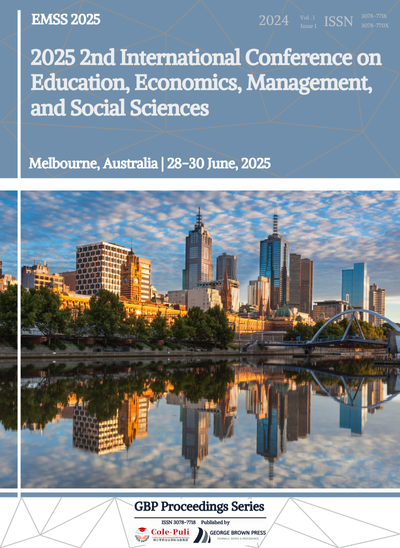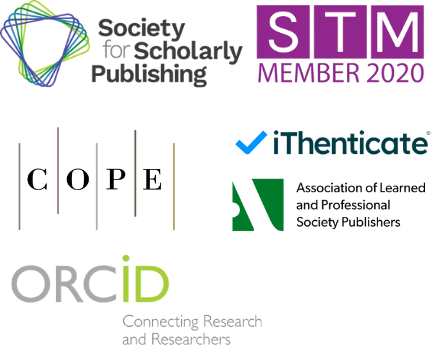Examining the Challenges of Bilingual Education in Chinese Mainland from an Asian Perspective
DOI:
https://doi.org/10.71222/chhvt993Keywords:
Chinese-English bilingual education, Krashen's Input Theory, cultural identity, language acquisition, educational reform, exam-oriented pedagogyAbstract
This study examines the challenges of Chinese-English bilingual education in mainland China from an Asian perspective, drawing comparative insights from bilingual education models in Singapore, Hong Kong, India, Japan, and other regions. Utilizing Krashen's Input Theory and semi-structured interviews with 10 bilingual individuals across Asia, the research analyzes the interplay between policy frameworks, cultural identity, and individual language acquisition experiences. Key findings reveal tensions between national language policies and personal educational backgrounds, the emotional and cultural dimensions of language choice, and systemic issues such as exam-oriented pedagogy, urban-rural resource disparities, and insufficient practical application of English. The study highlights the critical role of supportive environments, multimodal input, and culturally inclusive strategies in fostering bilingual proficiency. Recommendations include reforming assessment systems, integrating authentic language materials, and balancing instrumental goals with cultural preservation. The conclusion underscores the need for dynamic policy adjustments that harmonize global competencies with local identity, emphasizing acquisition-driven approaches and equitable resource distribution to address current barriers in mainland China's bilingual education landscape.
References
1. G. Hu, "The misleading academic discourse on Chinese–English bilingual education in China," Rev. Educ. Res., vol. 78, no. 2, pp. 195–231, 2008, doi: 10.3102/0034654307313406.
2. X. Gao and W. Ren, "Controversies of bilingual education in China," Int. J. Biling. Educ. Biling., vol. 22, no. 3, pp. 267–273, 2019, doi: 10.1080/13670050.2018.1550049.
3. A. Simpson, Ed., Language and National Identity in Asia. New York, NY, USA: Oxford Univ. Press, 2007. ISBN: 9780199267484.
4. H. Riza, M. Adriani, A. Purwarianti, L. Kong, H. M. Siahaan and F. Manurung, et al., "Introduction of the Asian language treebank," in Proc. Orient. Chapter Int. Comm. Coord. Stand. Speech Databases Assess. Tech. (O-COCOSDA), 2016, pp. 1–6, doi: 10.1109/ICSDA.2016.7918974.
5. R. Patrick, "Comprehensible Input and Krashen's theory," J. Class. Teach., vol. 20, no. 39, pp. 37–44, 2019, doi: 10.1017/S2058631019000060.
6. D. C. S. Li and S. Lee, "Bilingualism in East Asia," in The Handbook of Bilingualism, Hoboken, NJ, USA: Wiley, 2006, pp. 742–779, doi: 10.1002/9780470756997.
7. H. F. Schiffman, "Bilingualism in South Asia: friend or foe," in Proc. 4th Int. Symp. Biling., 2005.
8. P. Hallinger, "Making education reform happen: is there an ‘Asian’ way?," Sch. Leadersh. Manag., vol. 30, no. 5, pp. 401–418, 2010, doi: 10.1080/13632434.2010.502524.
9. J. Lin, "Policies and practices of bilingual education for the minorities in China," J. Multiling. Multicult. Dev., vol. 18, no. 3, pp. 193–205, 1997, doi: 10.1080/01434639708666314.
10. F. Tong and Q. Shi, "Chinese–English bilingual education in China: A case study of college science majors," Int. J. Biling. Educ. Biling., vol. 15, no. 2, pp. 165–182, 2012, doi: 10.1080/13670050.2011.607921.
11. L. Q. Dixon, "Bilingual education policy in Singapore: An analysis of its sociohistorical roots and current academic outcomes," Int. J. Biling. Educ. Biling., vol. 8, no. 1, pp. 25–47, 2005, doi: 10.1080/jBEB.v8.i1.pg25.
12. K. M. Graham and Y.-F. Yeh, "Teachers’ implementation of bilingual education in Taiwan: Challenges and arrangements," Asia Pac. Educ. Rev., vol. 24, no. 3, pp. 461–472, 2023, doi: 10.1007/s12564-022-09791-4.
13. E. T. Tricomi, "Krashen's second-language acquisition theory and the teaching of edited American English," J. Basic Writ., vol. 5, no. 2, pp. 59–69, 1986.
14. J. Liu, The application of interactive game teaching method for English speaking skill of grade 6 students in Sichuan Province, China, M.A. thesis, Rangsit Univ., 2022.
15. B. Meskhi, Z. Liu, L. Zhang, A. Safronov, Y. Zhao and H. Yang, et al., "Bilingualism in the scientific and educational discourse of China: Psychophysiological, organizational and pedagogical aspects," E3S Web Conf., vol. 210, 2020, Art. no. 18046, doi: 10.1051/e3sconf/202021018046.
16. L. P. F. Ma, "Advantages and disadvantages of native‐ and nonnative‐ English‐speaking teachers: Student perceptions in Hong Kong," TESOL Q., vol. 46, no. 2, pp. 280–305, 2012, doi: 10.1002/tesq.21.
17. C. Kirsch and N. H. Hornberger, "Multiple lenses to understand and shape multilingual literacy practices in Early Childhood Education," Lang. Cult. Curric., vol. 37, no. 3, pp. 289–309, 2024, doi: 10.1080/07908318.2024.2335938.
18. N. Xue, F. Xia, F. Chiou, Y. Liu, M. Palmer and M. Marcus, et al., "The Penn Chinese Treebank: Phrase structure annotation of a large corpus," Nat. Lang. Eng., vol. 11, no. 2, pp. 207–238, 2005, doi: 10.1017/S135132490400364X.
19. T. M. H. Chan, "The belt and road initiative–the new silk road: a research agenda," J. Contemp. East Asia Stud., vol. 7, no. 2, pp. 104–123, 2018, doi: 10.1080/24761028.2019.1580407.
20. M. S. Erbaugh, "Southern Chinese dialects as a medium for reconciliation within Greater China," Lang. Soc., vol. 24, no. 1, pp. 79–94, 1995, doi: 10.1017/S0047404500018418.
Downloads
Published
Issue
Section
License
Copyright (c) 2025 Runyi Wang (Author)

This work is licensed under a Creative Commons Attribution 4.0 International License.



